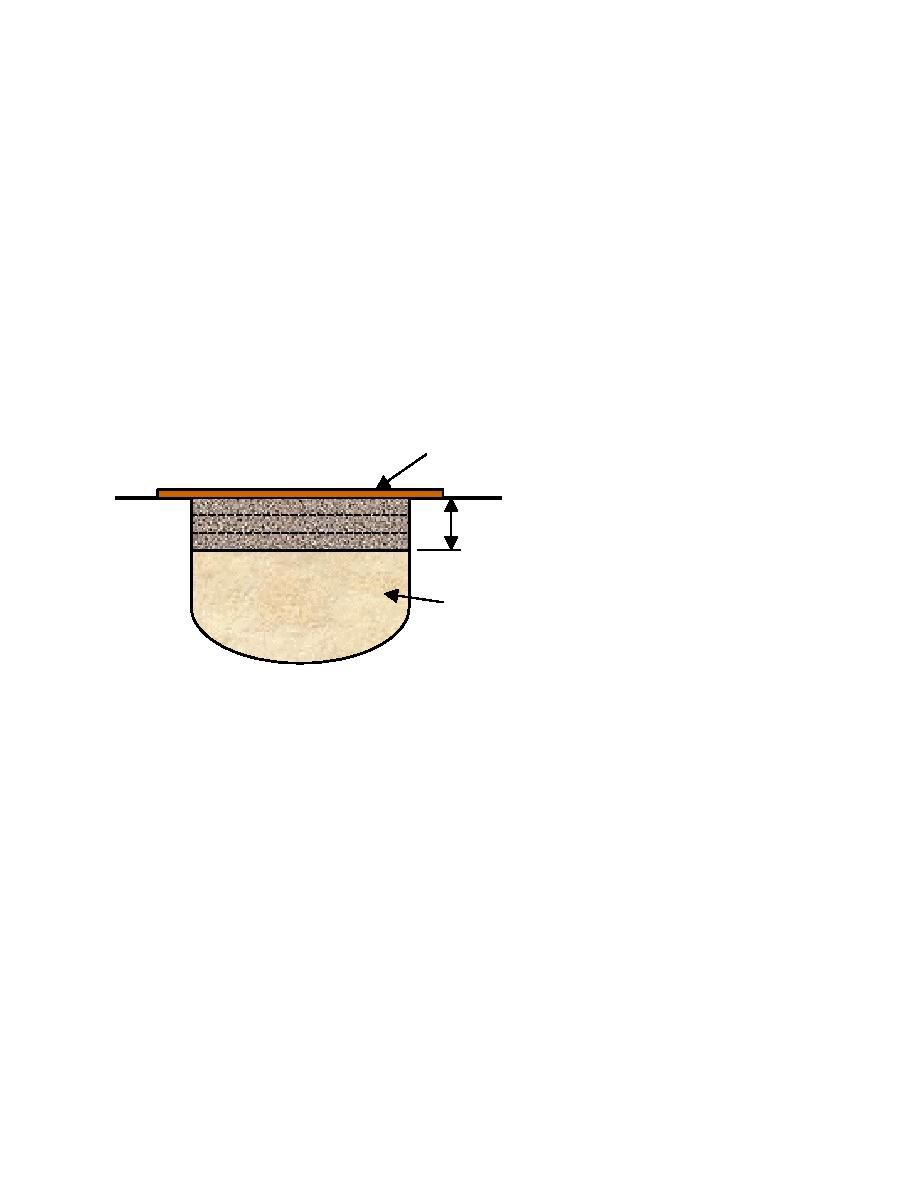
UFC 3-270-07
12 August 2002
minimum 25 California Bearing Ratio (CBR) to support C-17 operations or a
minimum 15 CBR to support C-130 operations.
(10) Perform profile measurement. The repaired crater must not exceed the
maximum RQC of 19 millimeters ( 0.75 inch). A repair outside this tolerance may
still be useable, depending on its location, but will have a much shorter life before
requiring additional maintenance to bring it back within this limitation.
(11) The crushed stone repair is complete at this point. Depending on the
particular location on the airfield or the type of mission aircraft, it may be left uncovered
or may require a FOD cover (see paragraph 2-3).
Figure 2-1. Crushed Stone Repair
FOD cover (if required)
457 mm (18 in) crushed stone, in 152 mm (6 in) lifts
25 CBR for C-17; 15 CBR for C-130
Backfill debris
2-2.4.2
Sand-Grid Repair Procedures. See Figure 2-2.
2-2.4.2.1 Clear debris from around the crater at least 6 meters (20 feet) in all directions
to allow identification of the upheaved pavement surface. Identification and removal of
all upheaval or damaged pavement is critical. It cannot be rolled down flush with the
existing pavement and left. The upheaved pavement will eventually break up and
create additional problems adjacent to the crater repair.
2-2.4.2.2 Perform a profile measurement and visual inspection to identify and mark the
upheaval around the crater.
2-2.4.2.3 Break out the upheaved pavement.
2-2.4.2.4 Square the sides to vertical from the original pavement surface down to 406
millimeters (16 inches).
2-2.4.2.5 All debris material in excess of 304 millimeters (12 inches) must be removed
or reduced in size.
2-7


 Previous Page
Previous Page
